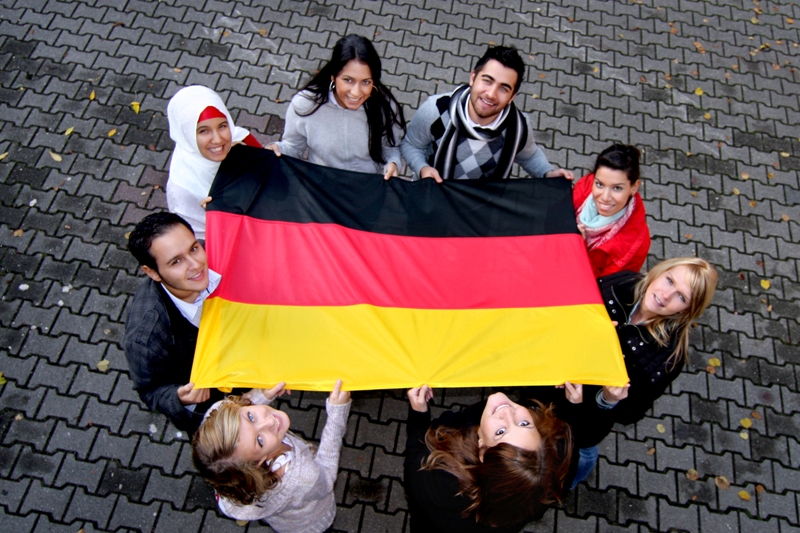The Federal Ministry for Migration and Refugees (BAMF) has published a new study on the number of Muslims living in Germany for the first time since 2009.
After the admission of hundreds of thousands of asylum-seekers by the Merkel government in summer and autumn of 2015, these numbers are eminently political: populist movements’ campaign platforms focus on the (perceived) ‘Islamisation of the West’, and 40 per cent of Germans believe that the country is being ‘infiltrated’ by Islam.
Providing a corrective to populists
These fears are also reflected in the tendency—observable in all Western countries—to overestimate the Muslim population. An Ipsos Mori poll, conducted in late 2016, revealed that German respondents estimated more than 20 per cent of the German population to be Muslim.1
Against this backdrop, the numbers of the BAMF study are a welcome reality check. According to the study, by December 31, 2015, Germany was home to between 4.4 and 4.7 million men and women of Muslim faith. This translates into a Muslim share in the overall population of about 5.4 to 5.7 per cent.
Growing diversity of the Muslim population
Moreover, the study contains interesting insights about the composition of the Muslim population in the country. While in 2011 67.5 per cent of Muslims were of Turkish background, their share has dropped to about 50.6 per cent. Muslims of Middle Eastern origin now constitute the second largest group among German Muslims.
This is linked to the fact that around 27 per cent of Muslims in Germany—or 1.2 million men and women—have only recently, i.e. over the past 5 years, immigrated to the country. Consequently, the diversity of Muslim life has grown significantly in Germany over the past few years.
An inadequate religious structure
The participation of these new arrivals in the existing religious institutions and frameworks is not straightforward, however. In a large number of the country’s mosques, Turkish language, culture, and Islamicality predominate, meaning that they struggle to attract Arab Muslims.
At the same time, many Syrians have felt uneasy to visit Arabic-speaking mosques, due to their conservative nature. Syrians reported that they were often criticised for their clothing style and their (lack of) religious devotion. Most of these mosques are financed by the Gulf monarchies.2
Some hope that the arrival of Syrians can help to break the hold of Wahhabi-Salafi orthodoxy in Arabic-speaking mosques. Yet this is not a foregone conclusion: Syrian refugee Jaber al-Bakr, who planned a bomb attack on one of Berlin’s airports, was reportedly radicalised by conservative Imams after his arrival in Germany.
Shortcomings on ample display
Yet in spite of its contribution to factualising the debate, the BAMF’s study also contains a number of distinctive shortcomings.
At the most general level, the fact that the study was conducted by the federal office responsible for migration and refugees is telling. It highlights that Islam and the presence of Muslims is still seen predominantly as a migrant phenomenon—rather than as a phenomenon that is part and parcel of ordinary German life and citizenship.
More particularly, the reliance on the databases of the BAMF means that German converts to Islam are not included in the study’s figures. The number of these converts is difficult to gauge due to lack of data. According to leading researcher Esra Özyürek, whose anthropological fieldwork has focused on German converts to Islam, estimates range from 20,000 to 100,000.3
Foreigner = Muslim
At the same time, the BAMF often counts every immigrant from a Muslim-majority country as Muslim—irrespective of whether the person in question identifies with the Islamic faith. Nor, of course, is the BAMF interested in the level and the particularities of individual religious observance.4
The study is thus an important contribution to a debate that all too often appears completely disconnected from factual analysis. Yet on its own, the obsession with numbers does very little to address any of the questions and problems that Germany and its Muslim community face.
Sources
https://www.theguardian.com/society/datablog/2016/dec/13/europeans-massively-overestimate-muslim-population-poll-shows ↩
https://de.qantara.de/inhalt/syrische-fluechtlinge-und-arabische-moscheen-in-deutschland-allah-hoert-zu ↩
http://www.spiegel.de/panorama/gesellschaft/muslime-in-deutschland-konvertiten-erfahren-besonders-viel-abneigung-a-1111636.html ↩
http://www.deutschlandfunk.de/zahl-der-muslime-in-deutschland-wie-viel-millionen-sind-es.886.de.html?dram:article_id=375505 ↩






